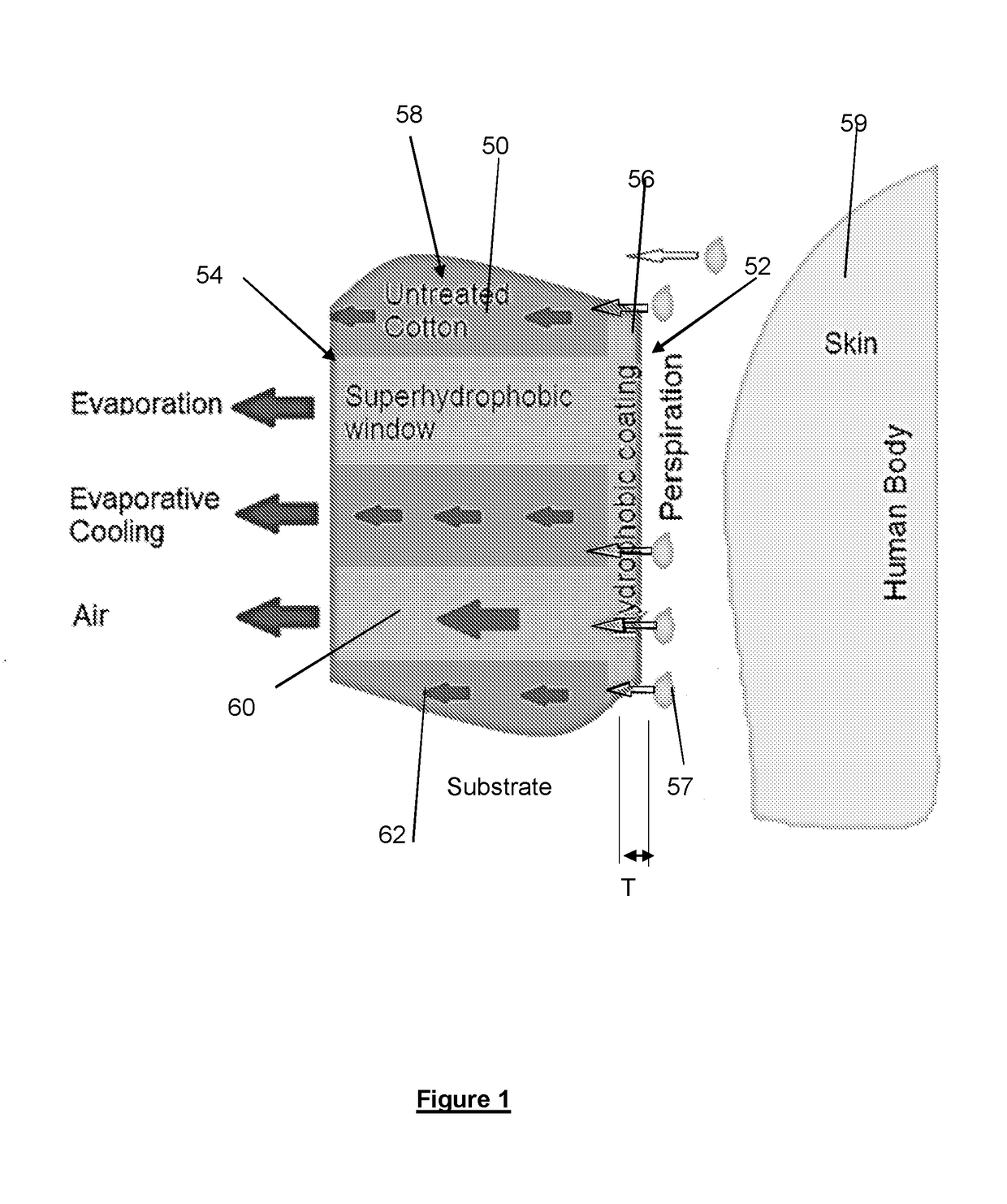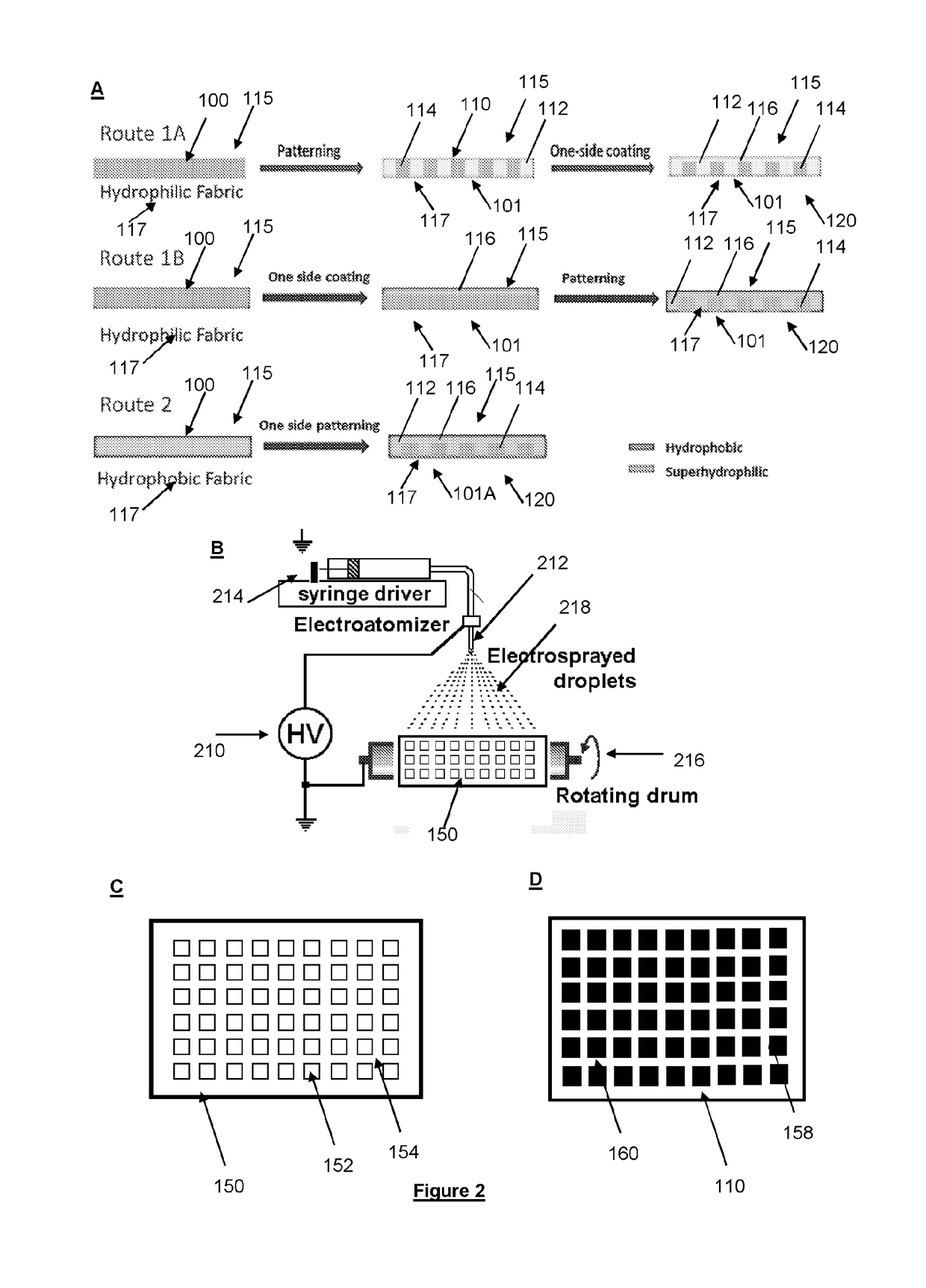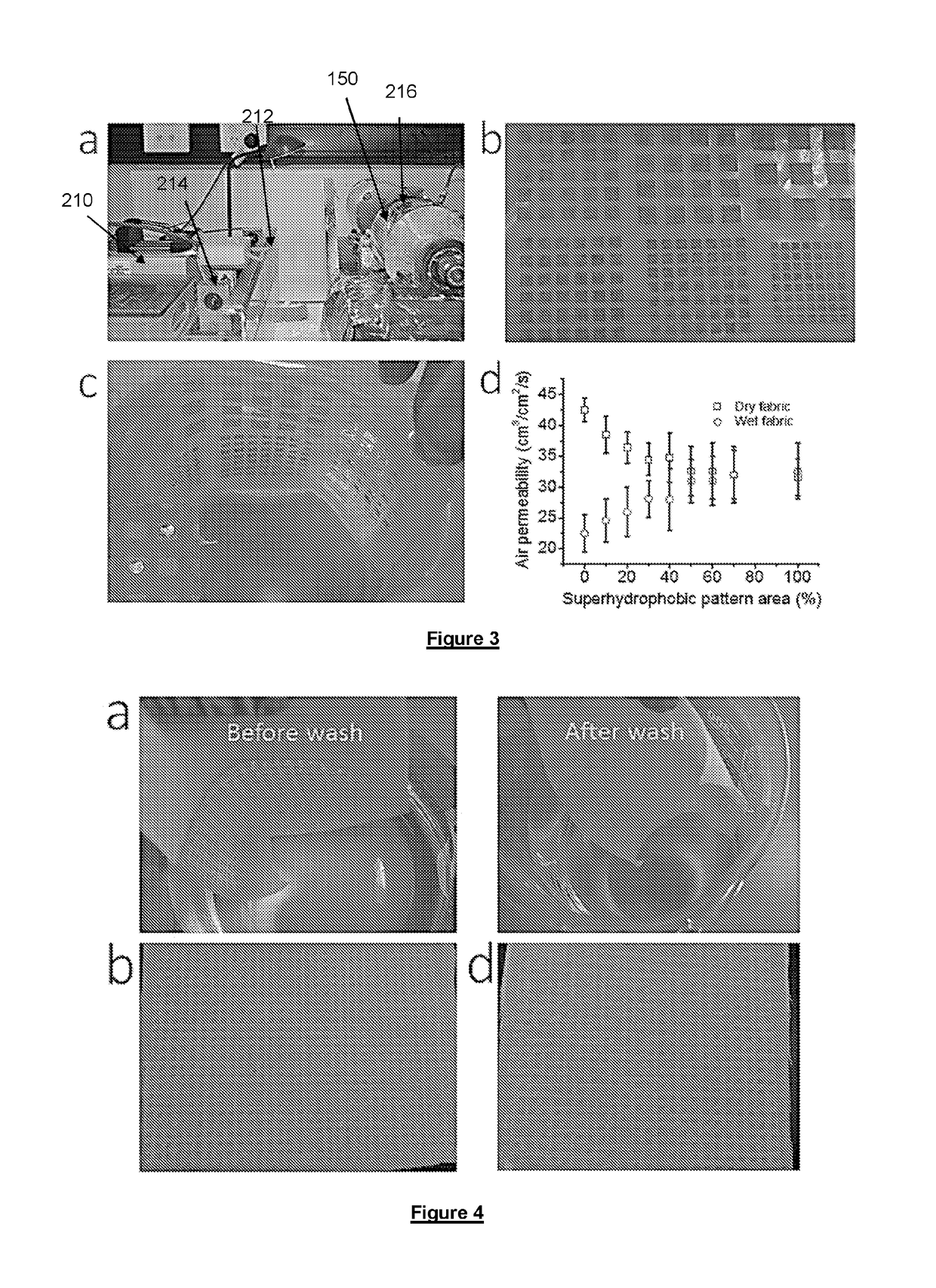Unidirectional wicking substrate
a technology of wicking substrate and permeable material, which is applied in the direction of weaving, liquid/gas/vapor textile treatment, pattern making, etc., can solve the problems of long drying period, garments becoming too wet and heavy, and not widely used in recreational performance apparel
- Summary
- Abstract
- Description
- Claims
- Application Information
AI Technical Summary
Benefits of technology
Problems solved by technology
Method used
Image
Examples
example 1
nt of Durable Superhydrophobic Pattern Treated Cotton Fabrics
[0179]Durable superhydrophobic treated cotton fabrics were developed having both directional water transport effect and breathable superhydrophobic pattern through further coating superhydrophobic solution on one side of the as-prepared non-wetting pattern cotton fabric using electrospraying coating technique.
[0180]Whilst the examples use a commercially available superhydrophobic coating material (ZONYL 321, a fluorocarbon surfactant manufactured by DuPont Company), it should be appreciated that a large variety of hydrophobic and / or superhydrophobic coating material could equally be used in the same pattern and coating techniques to achieve the directional water transport effect and breathable superhydrophobic pattern demonstrated in the exemplified examples. A number of suitable coating treatments are described above, and it should be appreciated that these could be utilised in similar techniques described in these exampl...
example 2
rototype Coating Treatment with Non-Wetting Pattern and Directional Water Transport (DWT) Effect
[0214]Fabric product prototypes were developed with the objective of demonstrating the proposed “every-dry”, “self-cooling” properties. The fabric product was subjected to a series of characterisations to prove the performance of the fabric. Durability against washing, abrasion and UV irradiation was evaluated.
5.1 Products Selection
[0215]Ten cotton products were purchased from commercial stores in Melbourne, Australia (Myers and Target). Table 4 (FIG. 13) shows the details of these cotton products. All the fabrics comprised pure cotton.
[0216]Fabric samples taken from these commercial products were used for coating treatment. FIG. 2 provides a schematic of the two stages of the coating procedure. The process follows the steps described above. In brief, the fabric samples were firstly subjected to a patterning treatment to form superhydrophobic patterns on the fabrics. The patterned fabrics...
example 3
us Membrane
[0227]Capstone®FS-82 solution was prepared by mixing Capstone®FS-82 (3 g) in 100 ml tap water to form a homogeneous superhydrophobic solution which can be applied onto the hydrophilic substrate to form a non-wetting coating. Hydrophilic PVA nanofibrous membrane was selected as substrate. Two-step coating process was developed to functionalize PVA membrane. In the first step, a Capstone®FS-82 non-wetting pattern (area portion is 50%) was generated on PVA nanofiber membrane using the screen e-spraying method. Capstone®FS-82 non-wetting coating solution was subsequently electrosprayed on one side of the patterned PVA nanofiber membrane. This makes the un-patterned area have a directional water transport effect. The membrane can also be functionalized in the reverse way. After the coating treatment, the PVA membrane was dried at 70° C. 100° C. for 15 minutes. The resulted membrane showed non-wetting pattern with directional water transport effect on the un-patterned area.
[022...
PUM
| Property | Measurement | Unit |
|---|---|---|
| thickness | aaaaa | aaaaa |
| thickness | aaaaa | aaaaa |
| surface temperature | aaaaa | aaaaa |
Abstract
Description
Claims
Application Information
 Login to View More
Login to View More - R&D
- Intellectual Property
- Life Sciences
- Materials
- Tech Scout
- Unparalleled Data Quality
- Higher Quality Content
- 60% Fewer Hallucinations
Browse by: Latest US Patents, China's latest patents, Technical Efficacy Thesaurus, Application Domain, Technology Topic, Popular Technical Reports.
© 2025 PatSnap. All rights reserved.Legal|Privacy policy|Modern Slavery Act Transparency Statement|Sitemap|About US| Contact US: help@patsnap.com



